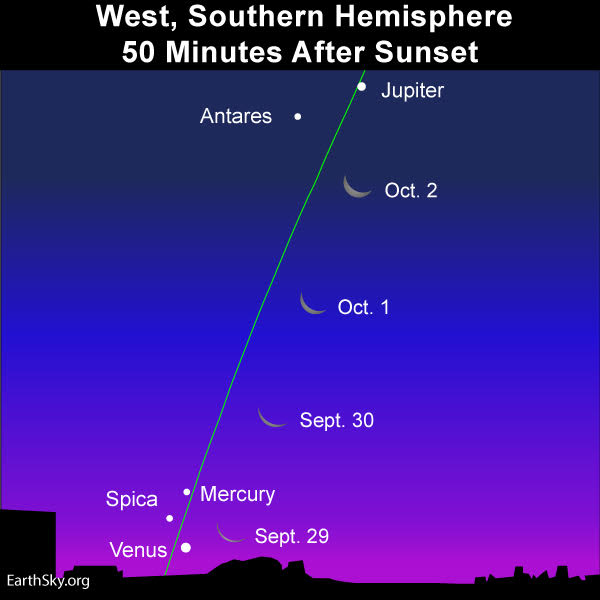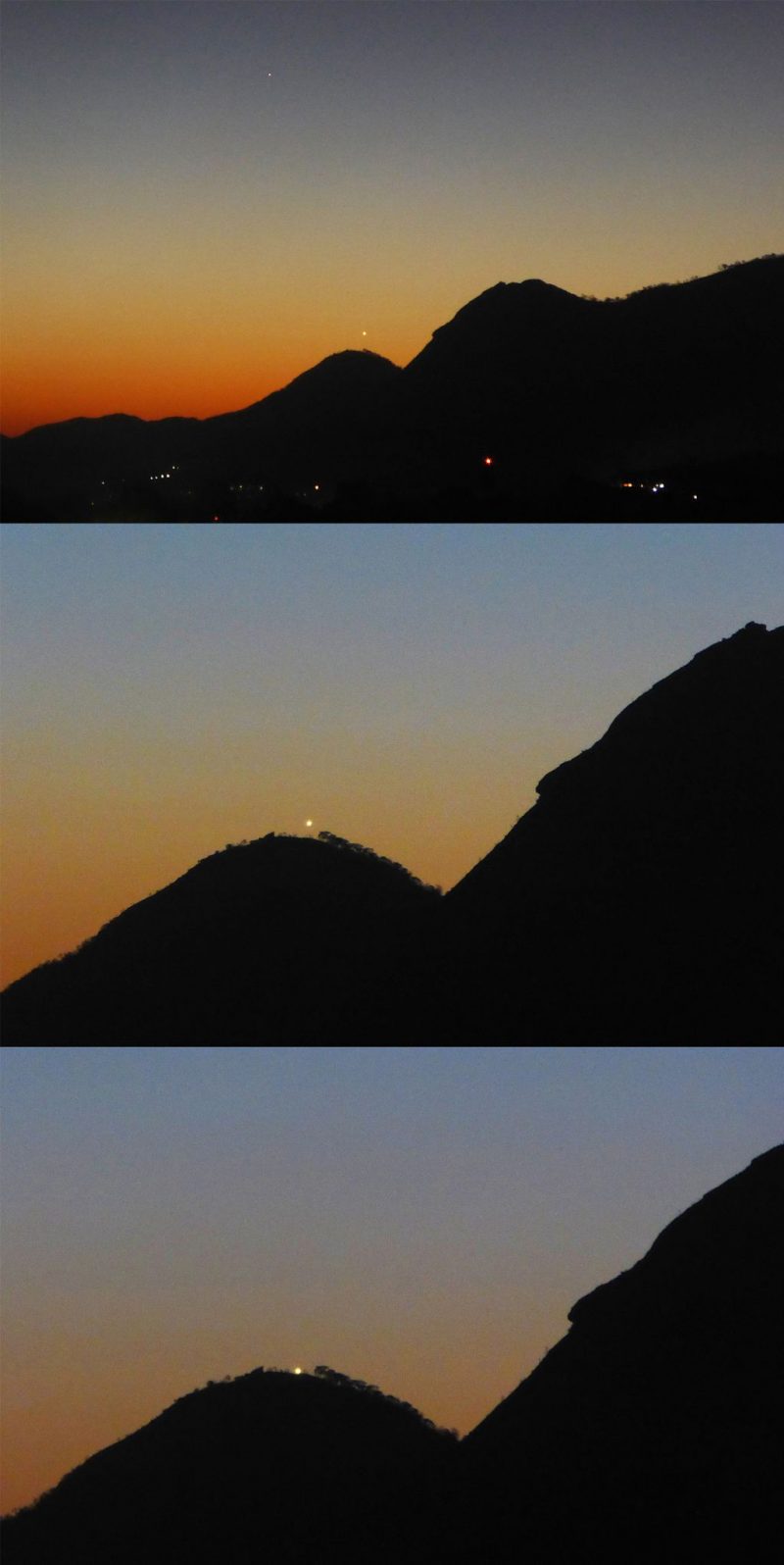
For a number of intrepid sky watchers, the hunt for the young moon counts as great sport. Seeking out a young moon that might – or might not – fleetingly show itself as a pale, skinny crescent in the western evening twilight demands fortitude and patience. That’ll be the situation on September 29, 2019, when chance of seeing the extremely young moon will vary around the globe. On that evening, the moon will be exceedingly low in the western sky after sunset, very near the place where the sun went down. Binoculars come in handy.
Following that – on September 30 and into the first couple of evenings of October – the young moon will be easier to see. It’ll be higher up in the west after sunset, edging closer each evening to the bright red star Antares – Heart of the Scorpion in the constellation Scorpius – and the even-brighter planet Jupiter.
So let’s focus on that first evening again for a bit: September 29. It’s quite difficult to catch a young moon that’s less than one day (24 hours) old, and for the world’s Eastern Hemisphere, the moon will be less than one day old as the sun sets on September 29.

Quite by coincidence, the line of sunset pretty much aligns with Earth’s prime meridian one day after new moon (2019 September 29 at 18:26 UTC). By the time that the line of sunset reaches Central Time Zone in North America, the moon will be about 30 hours old. Map via EarthView.
The further west you live on the Earth’s globe, the better your chances of spotting the young moon after sunset on September 29. That’s because the moon is somewhat older when the sun sets at more westerly longitudes.
Click here to find out the moon’s setting time in your sky, remembering to check the moonrise and moonset box.
Also, the further south you live, the better are your chances of catching the young moon on any of these evenings. That’s because the ecliptic – the approximate monthly path of the moon in front of the constellations of the zodiac – hits the sunset horizon at a steep angle in the Southern Hemisphere yet a a shallow angle in the Northern Hemisphere.
This particular young moon swings a maximum 5 degrees (10 moon-diameters) north of the ecliptic (5 degrees in ecliptic latitude). That erases much of the Northern Hemisphere’s disadvantage. This time around, the Northern Hemisphere finds itself in a better position than it usually does for spotting an early autumn young moon.
Click here to find out the present ecliptic latitude of the moon.

It’ll be easier to view the planets Mercury and Venus, plus the star Spica, from the Southern Hemisphere, because of the steep tilt of the ecliptic. Contrast with the feature sky chart at top for mid-northern latitudes,
Click here to know the moon’s place upon the zodiac.

View at EarthSky Community Photos. | Two planets – Mercury and Venus – also sit low in the west after sunset. They’re tough to spot, especially from the Northern Hemisphere. Peter Lowenstein in Mutare, Zimbabwe captured this series of images on September 27, 2019. Both Mercury and Venus very quickly follow the sun below the western horizon. Venus is much brighter than Mercury. Thank you, Peter!
Bottom line: Wherever you may live, the young moon is hard to catch on September 29, 2019, but easier on September 30, and on October 1 and 2.
Source:
https://earthsky.org/tonight/seek-for-a-young-moon-after-sunset